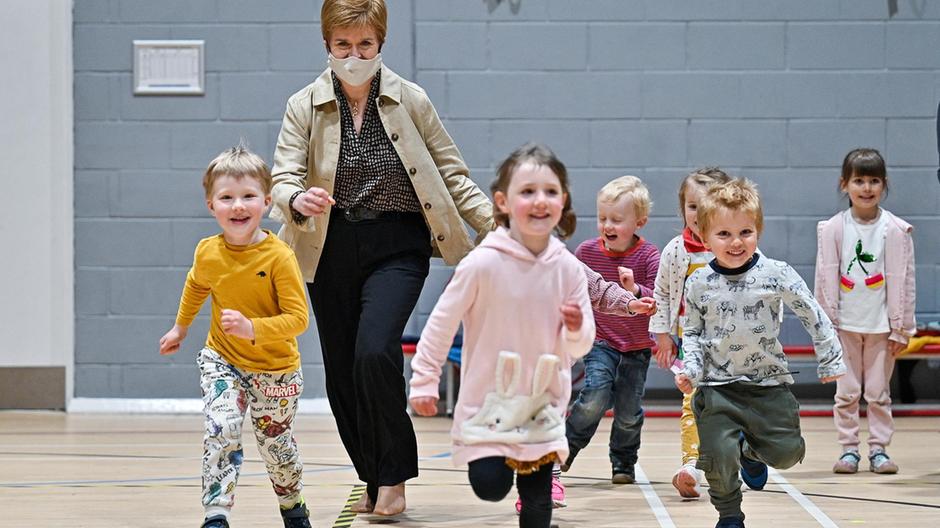“Mtoto” means child in Swahili. It’s also the nickname scientists have given to a set of human remains recently unearthed at a Stone Age site in Kenya. Mtoto was approximately three years old – a toddler – when he or she was laid to rest around 80,000 years ago. As reported earlier this month in the journal Nature, this is the oldest known burial of human remains in Africa. For me, however, the most awe-inspiring aspect of the discovery is that Mtoto was buried with so much care and tenderness, one might even say love. The archaeological evidence suggests the child was gently placed in the earth, wrapped in a shroud, head resting on a pillow. I wonder if cavemen cried?
According to some estimates, child mortality in the Stone Age might have been as high as 40 per cent. From our earliest ancestors through to the information age, nothing wrenches our heartstrings like child-sized shrouds and coffins. Death is inevitable, but the demise of a child is one of the hardest things we might ever need to accept.
Today, thankfully, child mortality is the lowest it has ever been. It is likely to decrease yet more. Globally, over the past three decades, the number of children dying before their fifth birthday has more than halved, from 12.6 million in 1990 to 5.2 million in 2019. Our progress in child health has been astounding, with mortality rates now as low as 0.2 per cent in some affluent nations. This is undoubtedly a great accomplishment, if somewhat unevenly distributed. But we have not made such correspondingly great strides in the mental health of young people. In some nations the rate of mental health problems among children even appears to have increased. On 5 November, 2019, just before Covid-19 hit, the United Nations issued a press release entitled Increase in child and adolescent mental disorders spurs new push for action by Unicef and WHO. In it, Unicef Executive Director, Henrietta Fore, suggested that: “This looming crisis has no borders or boundaries. With half of mental disorders starting before age 14, we need urgent and innovative strategies to prevent, detect and, if needed, treat them at an early age.” The Covid-19 pandemic has intersected with, and in many cases worsened, what was already an emerging problem.
In the UK, for example, referrals for eating disorders among children reached an all-time high during the last quarter of 2020, according to data from the country’s National Health Service. The 2020 rate was almost double that for the same period in 2019,with a 20 per cent increase in the most severe cases, that is, those requiring hospitalisation. Similarly, according to figures reported by Japan’s education ministry, the number of child suicides in 2020 was the highest since records began in 1980. Suicide is now the leading cause of death for Japanese children between the ages 10-14. Across various nations, similar trends and problems have been reported for childhood depression, anxiety and attention-deficit hyperactivity disorder. It is rare to find any reports that mention decreasing rates of psychiatric morbidity among children.
We have reached a pivotal moment in human history where the mental health of our young people must become a public policy priority. Children’s emotional well-being must take front and centre, from child protective services through to education, health and the environment.
Our schools should not be considered “outstanding” if they cannot demonstrate how they effectively safeguard and promote students’ emotional well-being. Healthcare systems should not be considered “world-class” if there isn’t adequate provision for specialist child and adolescent mental health services. Our cities should not be considered “smart” if they cannot connect children with nature, biodiversity and opportunities for physical activity. Before there is well-being, there is well-becoming: a safe place that is created by a loving society, where children flourish.
The UAE has made great progress towards promoting the emotional well-being of children. The list of initiatives is long, from introducing more robust child-protection laws to establishing the Early Childhood Authority and launching the World Early Development movement. This work is ongoing, pursuing the path of continuous systemic improvement. How could it be otherwise? Can our children ever be too emotionally well?
This work is motivated by the same force that 80,000 years ago moved someone enough to shroud Mtoto and rest the child’s head on a pillow, before saying their final goodbye. The emotional well-being of children begins and ends with love.
Justin Thomas is a professor of psychology at Zayed University and a columnist for The National


Comment here